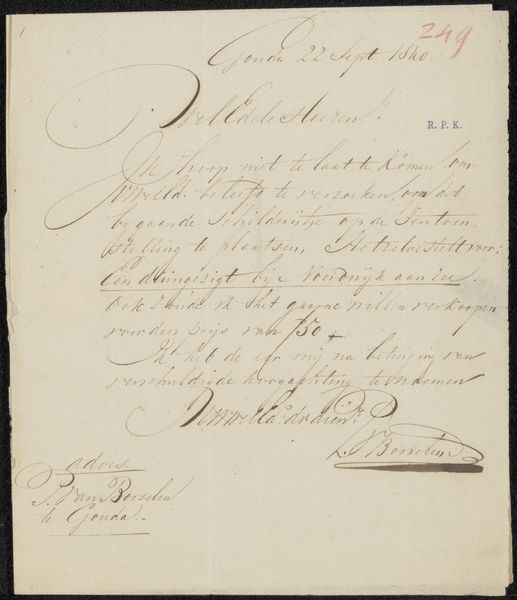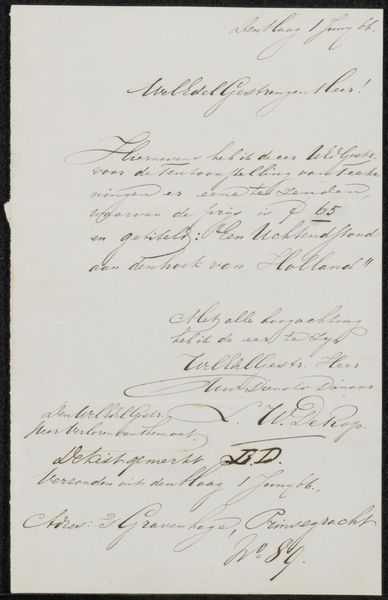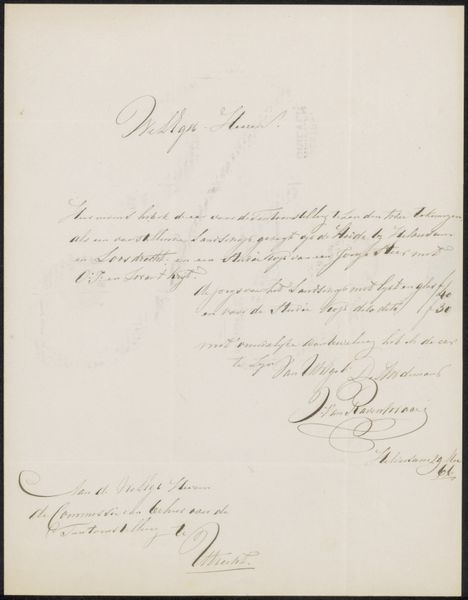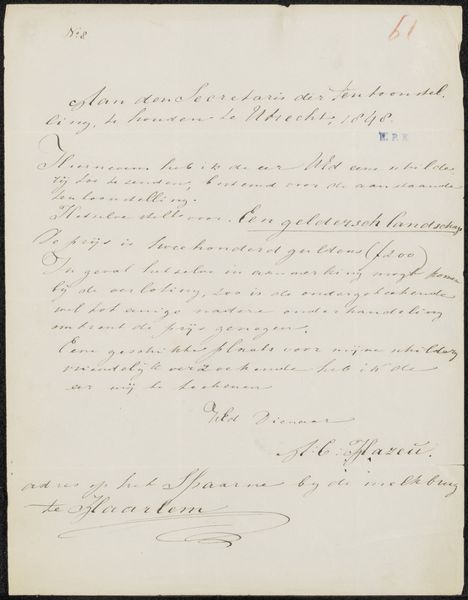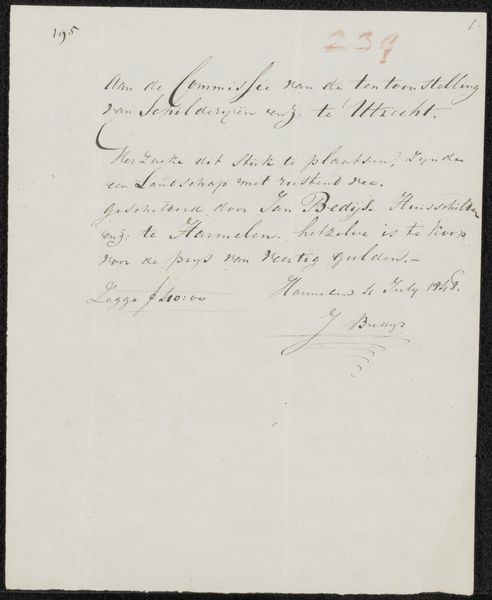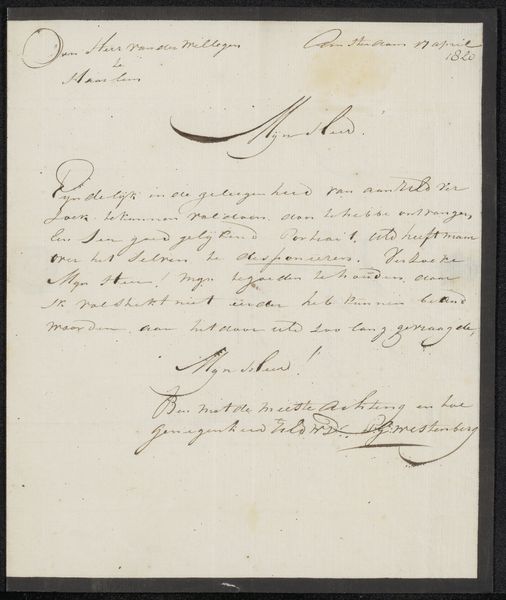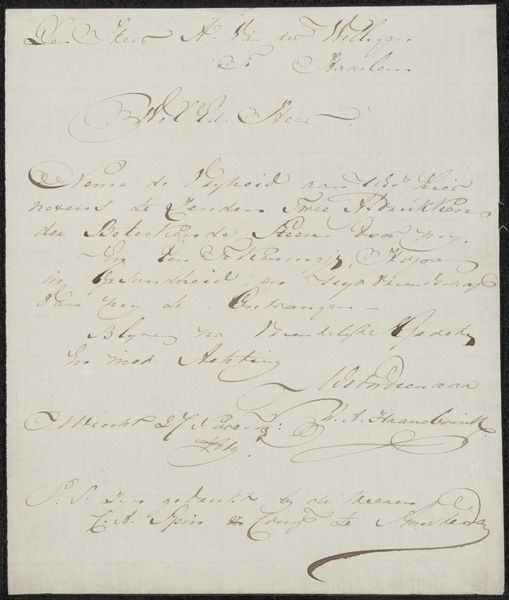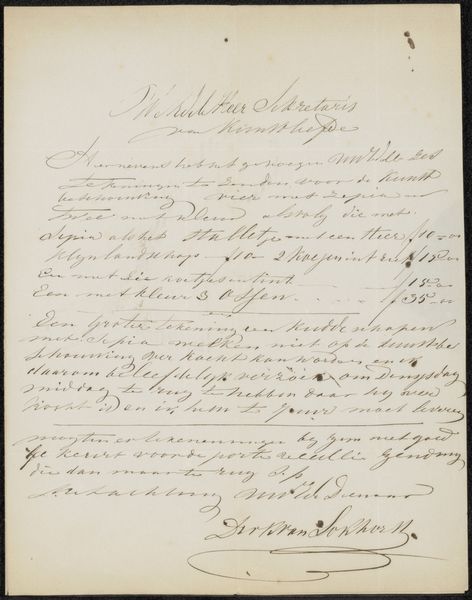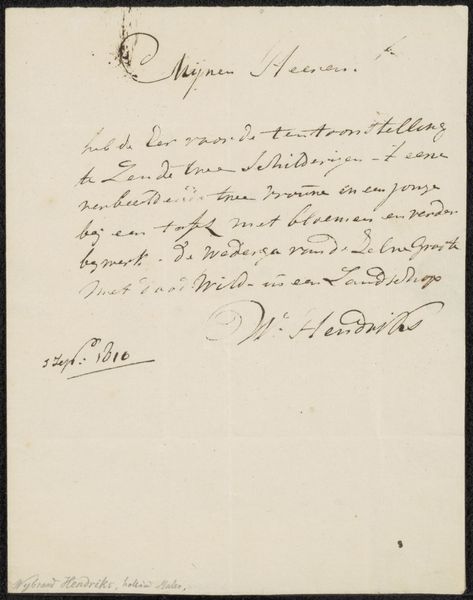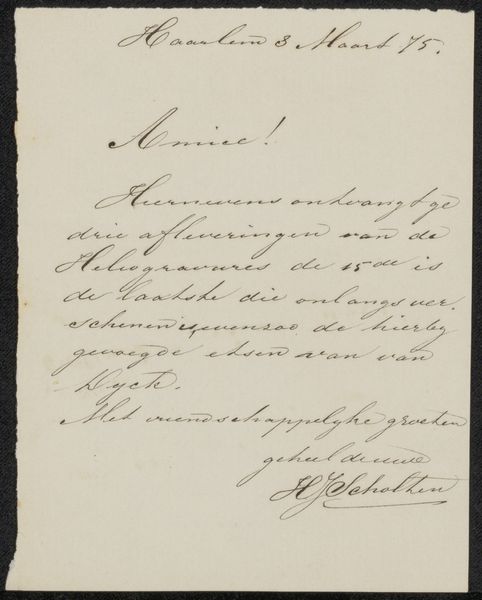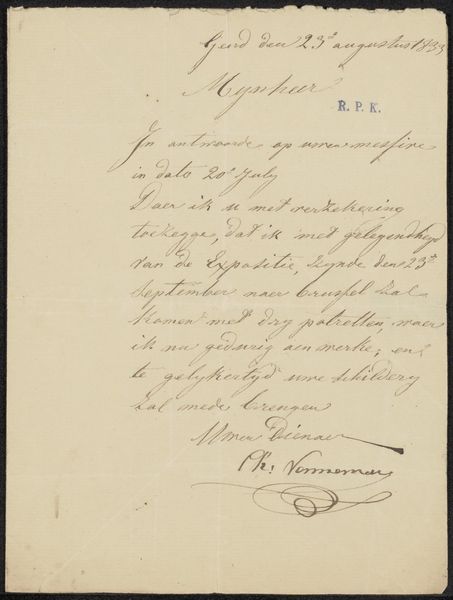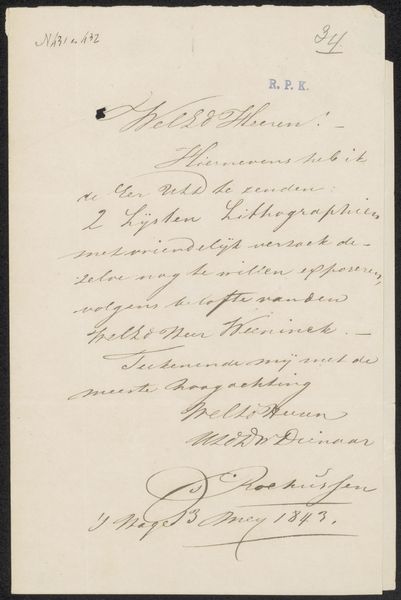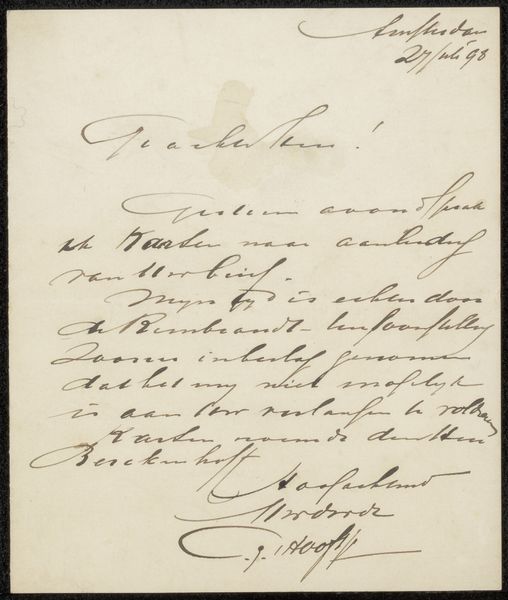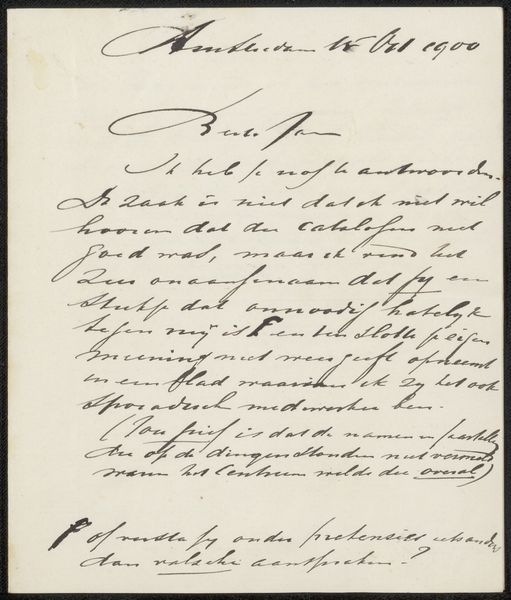
Brief aan de commissie van de Tentoonstelling van Levende Meesters in Utrecht Possibly 1848
0:00
0:00
drawing, paper, ink, pen
#
portrait
#
drawing
#
ink paper printed
#
hand drawn type
#
paper
#
personal sketchbook
#
ink
#
hand-drawn typeface
#
ink drawing experimentation
#
pen-ink sketch
#
ink colored
#
pen work
#
sketchbook drawing
#
pen
#
sketchbook art
#
calligraphy
Copyright: Rijks Museum: Open Domain
Curator: Here we have Cornelis Bedijs's "Brief aan de commissie van de Tentoonstelling van Levende Meesters in Utrecht," possibly from 1848. It’s an ink drawing on paper, showcasing Bedijs’s calligraphy. Editor: It feels incredibly personal. You see the ragged edges of the paper itself. And the way the ink bleeds slightly into the fibers... it speaks of something immediate, almost ephemeral. Like catching a thought as it forms. Curator: Absolutely. Calligraphy, especially in this era, held such symbolic weight. It wasn't just about conveying information; it was about the very essence of the writer – their education, their status, their intent. The hand-drawn type carries cultural memory with it. Editor: The means of production, too, were crucial. Pen and ink, accessible yet demanding a certain mastery. Think about the quality of the paper itself, and the formulation of the ink—the materiality impacts its archival quality and the impression it leaves behind. Did Bedijs prepare his own inks, using recipes passed down through generations? Curator: Possibly. It adds another layer of meaning. In essence, this letter, seemingly a simple correspondence, speaks volumes about artistic hierarchies and the negotiation of taste within the 19th-century Dutch art world. Editor: It also shows that boundary between art and craft which feels very potent, even now. Was this meant to be purely functional, or was there an awareness of its aesthetic quality? And that question is what makes this small piece sing. Curator: Indeed. Its strength resides in those very tensions, making us question the definitions of art and intention and reflecting the hopes and concerns of an artist living at that time. Editor: For me, I just love how the history is caught in the materials of the paper.
Comments
No comments
Be the first to comment and join the conversation on the ultimate creative platform.
